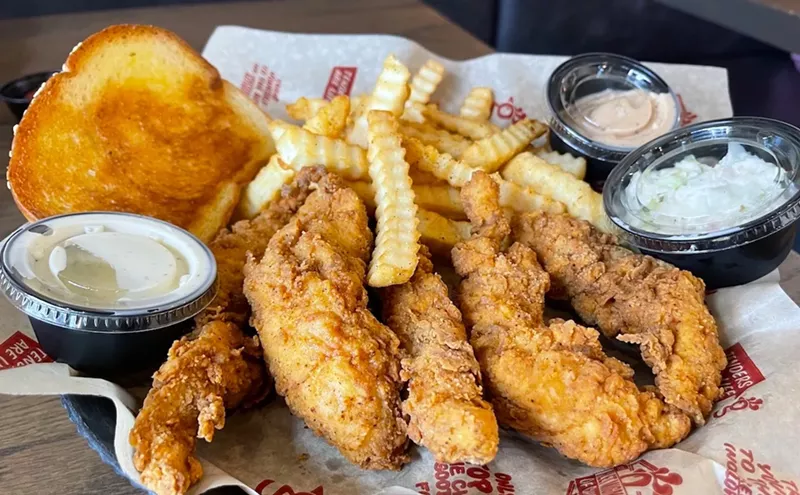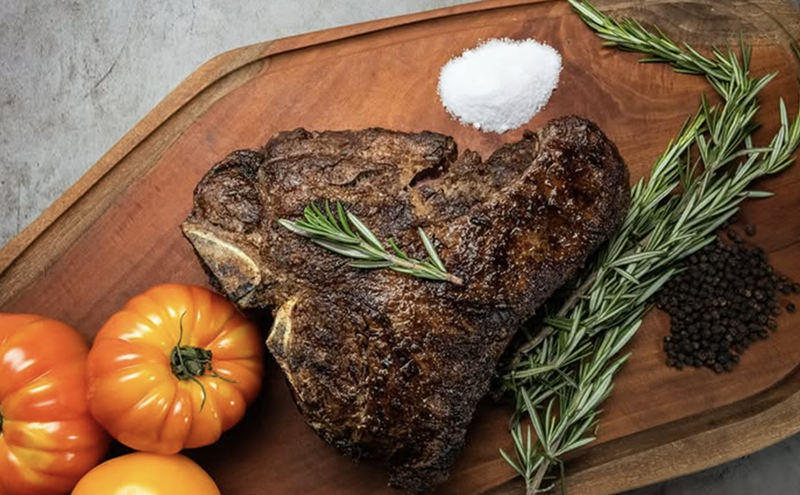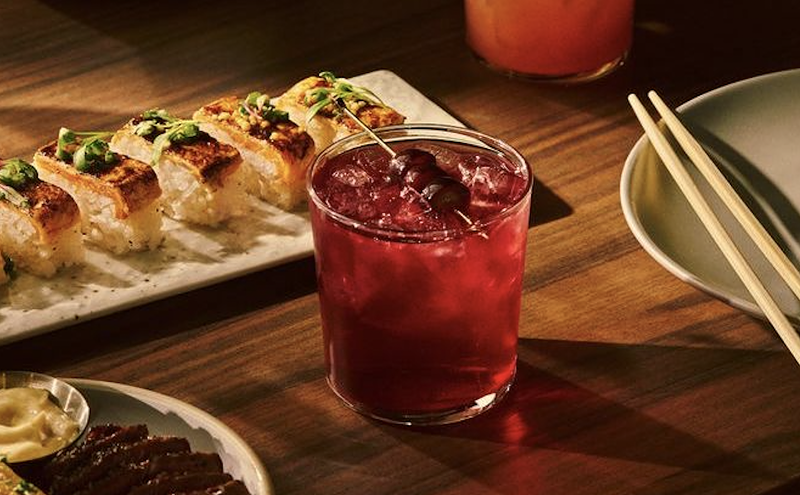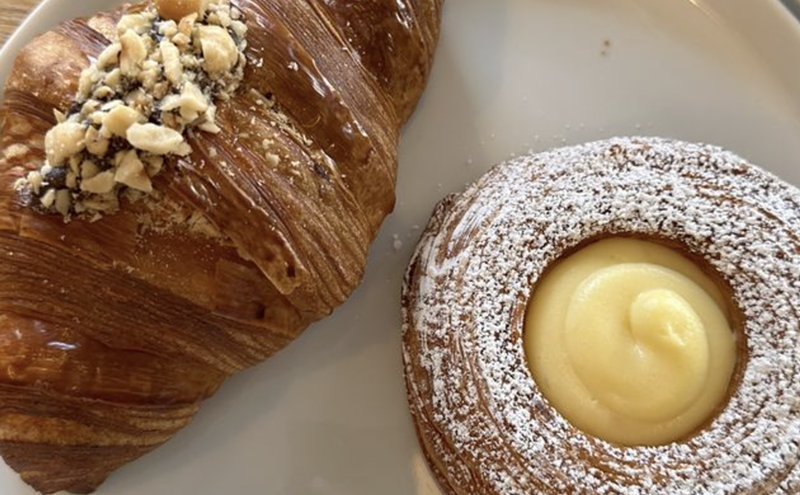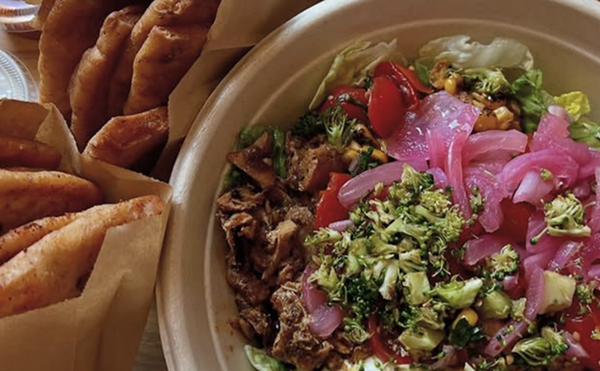Despite the fact -- proven time and time again -- that a restaurant can fail at any time (and for any number of reasons, not the least of which would be a decline in value, service, or presentation), most chef-owners view their first anniversary as something of an occupational milestone, celebrated with a combination of gratitude and relief. At the end of 1993, Cindy Rothman used the opportunity to examine the status of Cilantro, her Southwestern-Mexican venture in Coral Gables. And she discovered she simply wasn't satisfied.
Neither a failure nor an overwhelming success despite her talent, Cilantro was competing with a dozen restaurants on Giralda Avenue alone. And Rothman, a graduate of the New York Restaurant School who paid twelve years' worth of dues in some of Manhattan's most prestigious Mexican kitchens (not to mention Coral Gables's Las Puertas), is a self-described startup A a chef who opens a new business or breathes life into a foundering one, then moves on to another project after a year or so. Used to short-term successes, she concluded that Cilantro, like most other Gables establishments, would never achieve its full potential there. So she sold out to Justa Pasta and started searching for a new place to plant Cilantro.
Shortly thereafter, the owner of La Siesta, a fast-food Mexican restaurant in North Miami, approached Rothman with the offer of a silent partnership, and Cilantro was reborn in January on Biscayne Boulevard. In between the one closing and the other opening, Rothman was obviously honing her already sharp skills: Three weeks after its inception, Cilantro was commanding a respectable crowd and Rothman was turning out her thoughtfully prepared, innovative cuisine.
Many of Rothman's little touches -- the ones that make Cilantro inviting -- are more reminiscent of southern California than of South Florida. On a recent visit, homemade red-, yellow-, and blue-corn tortilla chips, welcome treats for this city that prefers the white and basic black of rice and beans, were fresh and warm; salsa was chunky and spicy. Another complimentary appetizer was pleasing in tint and texture: Plump oysters had been rolled in blue cornmeal and fried to buttery perfection. Sticks of golden fried polenta alternated with the shellfish in a sundial presentation, surrounding a center of yellow tomato salsa.
Like the oysters, the appetizers we actually ordered were a reflection of the southwestern decor that characterizes the cafe. A giant sunburst of fruit purees, mango for the sun itself and raspberry for the rays, lit up the plate of the wild-mushroom quesadilla. Shiitake and oyster mushrooms had been sauteed in salted butter, then layered with mozzarella cheese between two flour tortillas and heated. The result was a flat, delicious sandwich, cut into quarters. The fruit sauces were brilliant counterpoints for the earthy, salty mushrooms and cheese.
The calamari rellenos rivaled the quesadilla in quality. Two large pieces of squid had been stuffed with a mixture of roasted corn, red peppers, mushrooms, onions, and garlic. A piquant, smooth tomato salsa accompanied the rolled squid; crisp, flash-fried leeks topped it. The white mollusk was so tender it could have been dough.
A third appetizer, snapper hash, was billed as the house specialty. Having sampled this concoction at the old Cilantro, I remembered it as tasty, unusual, and ugly. Memory served correctly. A fillet of red snapper had been poached in a fresh tomato salsa and seasoned, at which point the fish, like a good snow, fell into wet flakes. Tangy with lime and nutmeg, the hash was flattened into a simple oval on a plate and served with just-warmed flour tortillas. A decorative cactus, cut from a red corn tortilla and fried, and a sprig of cilantro garnished the dull-pink dish but couldn't beautify it much.
Reminders, bold and subtle, of the painted desert continued with the entrees. Blue-corn enchiladas were a delightful casserole: two pancakes stuffed with delicate scallops, shrimp, and soft mild leeks, enhanced by a chipotle-tomato sauce and baked. As with all the entrees, a crunchy-sweet jicama and carrot salad and a savory rice blended with cheese, kernels of corn, and jalape*os were served on the side. Another side dish, beans cooked in beer, was yeasty and fragrant. More tortilla cutouts -- stars and long, twisting arrows -- decorated the plate.
Sliced into confetti strips, tortillas were put to more significant use as a coating on the fillet of salmon. The fish was gently sauteed, the corn crisps acting like breadcrumbs to seal in heat and moisture. A roasted tomato and saffron sauce combined to wonderful effect with a tomatillo (green tomato) creme fraeche under the salmon, accenting the fine flavor of the fish.
You can't yet drink tequila at Cilantro (beer and wine only, though plans are in the works for a full bar). But you can order the pollo borracho -- "drunken chicken." Half a chicken was poached (or should I say "pickled"?) with tequila, green olives, toasted almonds, and raisins. The skin-on chicken was as golden as a south-of-the-border sun, and the sauce had an astonishing flavor, sweet and tangy and intense. Though the bird was fall-apart tender, the dark meat was underdone near the bone. Perhaps it wasn't quite drunk enough. With a little extra simmering, this would have been a perfect way to have your tequila and eat it, too.
Although the North Miami location has some drawbacks (such as an exceedingly poor parking lot that is preventing her from serving lunch), Rothman is pleased with the change. Response, she says, has been gratifying. Cilantro's loyal patrons, most of whom lived in North Miami anyway, have already discovered the move. Even more significant, new customers are discovering the strip-mall location. As business takes off, Rothman's enthusiasm matches it. Cilantro, she hopes, will become a "destination spot." She's already working on the parking problem and hopes to convert the concealed kitchen into an open one.
I don't particularly care what the kitchen looks like as long as I can depend on the fare that's coming out of it. And right now, at least, dishes are precisely the way Rothman describes them: creative cuisine from the Southwest and Mexico.


